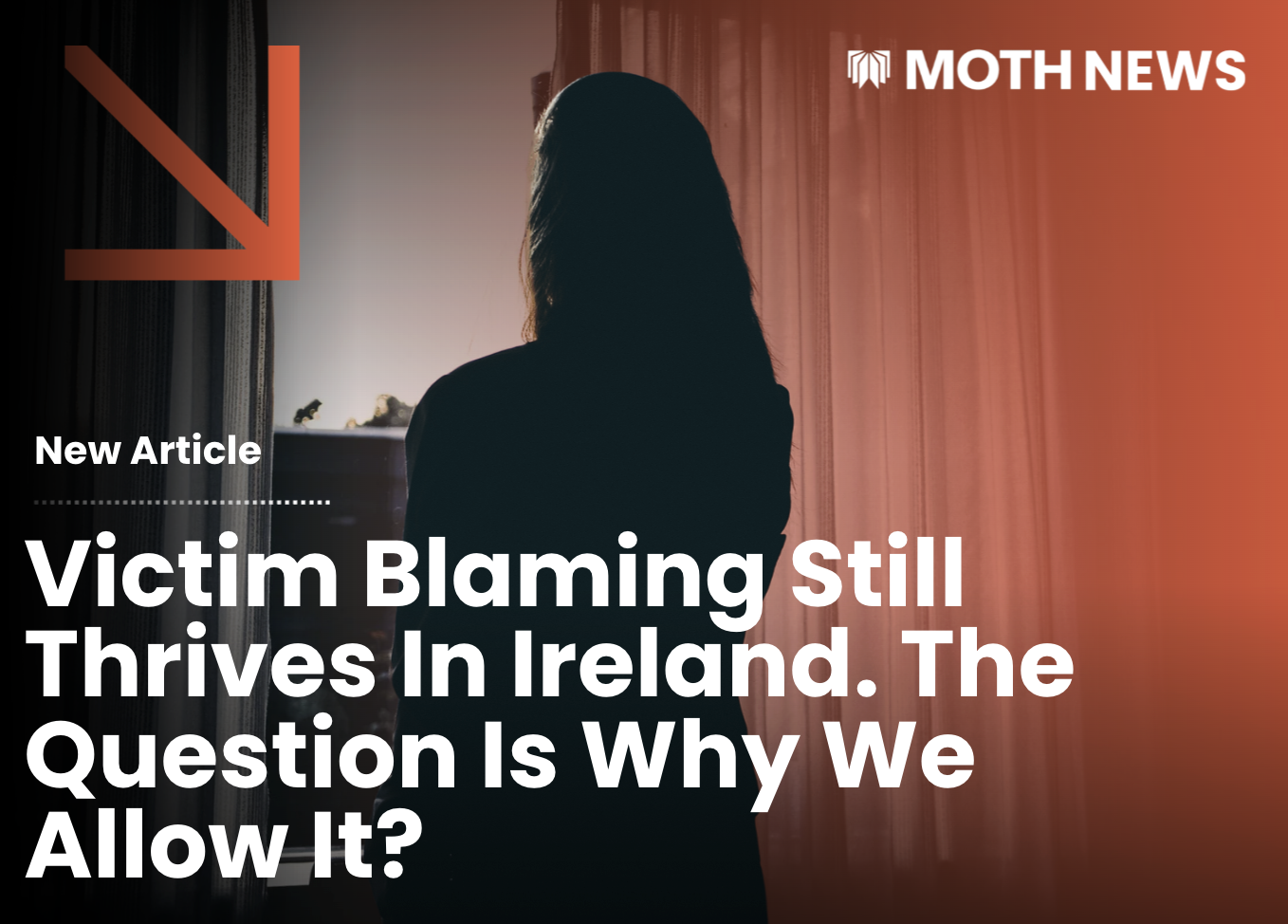.png)
Sexual violence in Ireland and the UK: One conviction, thousands ignored
A rare case that reached court
On Monday, the Irish Times reported that a man who had filmed other men urinating in Dublin Airport toilets had been sentenced.
The accused, a Spanish national who had previously lived in Dublin while working as cabin crew, targeted men who were unable to be identified and it is likely they remain unaware of the crime.
In sentencing, the judge described his behaviour as a depraved act. However, the man received only a suspended one-month sentence for “good behaviour,” meaning he has not spent a single day in prison.
While his nationality was highlighted in reports, it is important to note that this does not support the harmful myth that migrants or asylum seekers are more likely to commit sexual offences. In fact, the evidence shows the opposite: Irish women are far more likely to be harmed by Irish men, including partners, ex-partners, acquaintances, and people they already know.
The scale of sexual violence in Ireland
The case is unusual, not because the offence itself is rare, but because it reached prosecution.
According to the Central Statistics Office’s 2022 Sexual Violence Survey, 52 percent of women and 28 percent of men in Ireland will experience sexual violence in their lifetimes.
Yet Rape Crisis Network Ireland reports that only about 7 in every 100 survivors disclose to Gardaí. And even when they do, the Dublin Rape Crisis Centre estimates that just 14 to 15 percent of reports ever make it to court.
In practice, that means:
- Out of 100 survivors, only about 7 report.
- Of those 7, only 1 will see their case reach trial.
To put it into everyday terms: in 2024, there were about 3,288 sexual offences officially recorded in Ireland. That is around 9 victims logged each day. But given underreporting, the real number is closer to 90 people a day in Ireland experiencing sexual violence.
And yet fewer than 1 in 100 will ever see their case in front of a judge. And even then, conviction rates are uncertain, as is the additional trauma faced by survivors who go through the court system.
.png)
Why some cases make headlines and others do not
If there are so many cases every day, why did this one make national headlines?
Media researchers point to framing and news values. As Robert Entman defines it, framing means highlighting some aspects of reality and downplaying others. And editors use news values to decide what counts as news.
This Dublin Airport case ticked several:
- Surprise factor: a crime in a busy public space.
- Novelty: the accused was cabin crew, a trusted professional.
- Bad news: it was easy to write, easy to provoke outrage.
- Relevance: Dublin Airport is a place most readers know.
- Unusual victims: in this case, men.
As Baker and Rodrigues point out, sexual violence is only reported when there is something “extra” such as a celebrity, a shocking twist, or an unusual setting. Routine, everyday violence, especially in homes or relationships, is often left out.
This selective reporting creates a distorted picture. Cases like the one in Dublin Airport appear as shocking exceptions, when in reality sexual violence is happening daily, usually in private, and goes unreported.
The UK comparison and the myth of stranger danger
The same patterns appear in the UK. Upskirting, which involves secretly taking photos or videos under someone’s clothing, only became a specific offence in England and Wales in 2019. You would expect that once it was illegal, convictions would follow. But the numbers tell a different story.
Since 2019, police have recorded more than 1,100 upskirting crimes. Out of those, only about 68 led to convictions.
If we widen the view, police recorded around 10,775 voyeurism and indecent exposure cases in one year. Fewer than 600 made it to court, and just over 400 ended in conviction.
This matters because public coverage of these cases often reinforces the idea that sexual violence comes from strangers. In political rhetoric, this can be twisted into the claim that asylum seekers are the main threat.
But the data shows otherwise:
- In Ireland, 64 percent of adult sexual violence against women involved someone they already knew.
- For men, 46 percent of perpetrators were partners, relatives, or acquaintances.
- In England and Wales, 53 percent of rapes were by partners or ex-partners, and another 29 percent by family, friends, or acquaintances. Only 10 percent involved strangers.
The numbers are clear: women in Ireland and the UK are far more likely to be harmed by men they already know than by strangers, let alone asylum seekers.
Shifting the narrative and supporting survivors
So, what can we do?
At a minimum, when we discuss stories like this, which may be traumatic for readers, we can signpost networks like Rape Crisis Ireland. We can invite experts to share their views. We can believe survivors and help them access the support they need.
We can also make sure we report on the everyday cases, not just the unusual ones. We can work to destigmatise survivors and support them in speaking out against perpetrators.
Most importantly, we can shift the narrative. We can turn survivors from shadowy figures hidden in statistics into real people with real voices. We can challenge victim-blaming myths. And we can remind people that while someone may have experienced sexual violence, it does not have to define their whole life.
They are more than their experience.
And real change begins when we change how we talk about sexual violence, and how we listen to those who have lived through it.
Sources
- Irish Times, 29 Sept 2025: Cabin crew member made depraved videos in Dublin Airport toilets, court hears
- Central Statistics Office (2022). Sexual Violence Survey, Main Results
- Central Statistics Office (2024). Recorded Crime Victims 2024 and Suspected Offenders 2023
- Rape Crisis Network Ireland (2022). Rape Crisis Statistics 2022
- Rape Crisis England & Wales (2023). New Victims’ Commissioner report reveals harmful impact of court delays
- Entman, R.M. (1993). Framing: Toward Clarification of a Fractured Paradigm. Journal of Communication, 43(4), pp.51–58.
- Gilchrist, K. (2010). ‘Newsworthy’ Victims?. Feminist Media Studies, 10(4), pp.373–390.
- Harcup, T. and O’Neill, D. (2001). What Is News? Galtung and Ruge revisited. Journalism Studies, 2(2), pp.261–280. DOI link
- Baker, G. and Rodrigues, D. (2020). Discourses of Sexual Violence. Routledge.
- Sky News (2023). Girls aged three among victims of upskirting as teenager describes anger at school’s response
- The Guardian (2021). Police log 10,000 indecent exposure cases but fewer than 600 reach court
- Office for National Statistics (2018). Sexual offending – victimisation and perpetration
- Rape Crisis Help Ireland – Support Services - https://www.rapecrisishelp.ie/
Subscribe to our mailing list
Get notified on the latest episodes and when they drop.





.png)